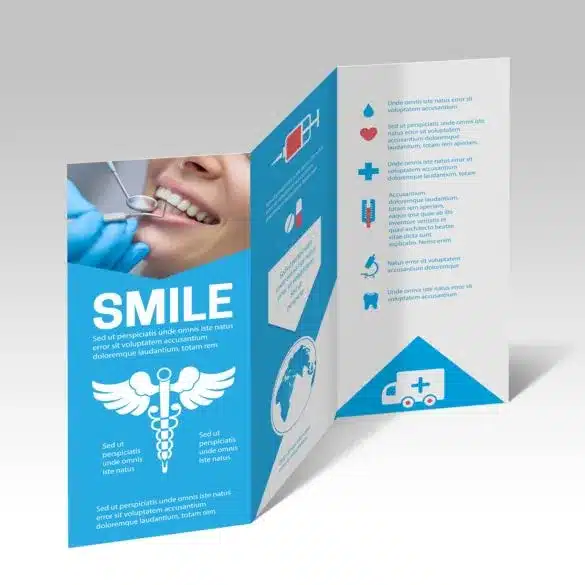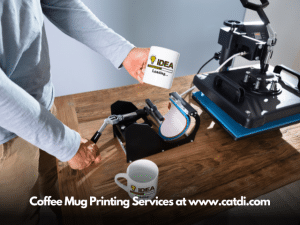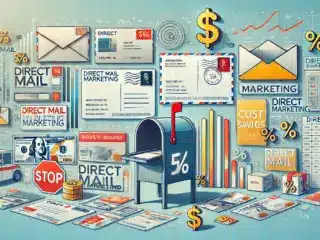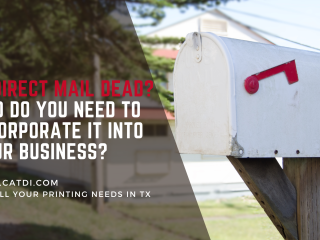Last Updated on June 15, 2023 by Carlos Alonso
Brochures are an essential marketing tool for businesses to communicate their products, services, and brand identity to potential customers. They provide a tangible and informative representation of what a company has to offer. However, brochure printing can be a complex process, and there are several common mistakes that can negatively impact the effectiveness of a brochure. In this blog post, we will explore these pitfalls and provide practical solutions to avoid them.
II. Design Mistakes
A well-designed brochure is visually appealing and effectively conveys information to its audience. However, there are some common design mistakes that can hinder its impact. Let’s take a look at three of these mistakes and how to fix them.
A. Lack of hierarchy and organization
One of the most crucial aspects of brochure design is establishing a clear visual hierarchy. Without proper organization, the reader may feel overwhelmed and find it challenging to navigate through the content. To create a hierarchy:
- Use headings and subheadings to break down information.
- Employ font sizes, styles, and colors to distinguish different levels of importance.
- Utilize white space to create breathing room and prevent overcrowding.
B. Poor color choices
Color plays a vital role in capturing the reader’s attention and evoking emotions. However, using inappropriate colors can have a detrimental effect on the overall impression of the brochure. Consider the following tips when choosing colors:
- Understand color psychology and its impact on emotions and associations.
- Use a color palette that aligns with the brand identity and target audience.
- Ensure sufficient contrast between text and background colors for readability.
C. Overcrowded layouts
An overcrowded layout can overwhelm the reader and make it challenging to digest the information presented. To create a balanced layout:
- Prioritize essential information and remove unnecessary elements.
- Use grids or columns to organize content effectively.
- Leave ample white space to improve readability and visual appeal.
By addressing these design mistakes, your brochures will become more visually engaging, organized, and impactful.
III. Content Mistakes
While design is essential, the content of a brochure holds the key to conveying the intended message effectively. Let’s explore three common content mistakes and their remedies.
A. Unclear or confusing messaging
Clear and concise messaging is crucial for ensuring that the reader understands the purpose of the brochure. To avoid confusion:
- Clearly define the objective of the brochure and the target audience.
- Craft a compelling headline that immediately captures attention.
- Use concise and straightforward language to convey information.
B. Grammatical and spelling errors
Grammatical and spelling errors can undermine the credibility of a brochure and create a negative impression. To maintain professionalism:
- Proofread the content thoroughly to catch any errors.
- Utilize online grammar and spell-check tools to enhance accuracy.
- Consider seeking the assistance of professional proofreaders or editors.
C. Lack of a clear call-to-action
A call-to-action (CTA) is essential to guide the reader towards the desired action. To create a compelling CTA:
- Clearly state what action the reader should take.
- Make the CTA visually prominent through color, size, or placement.
- Provide contact information or additional resources for further engagement.
By addressing these content mistakes, your brochures will effectively convey the intended message and inspire action from the reader.
IV. Printing Mistakes
Printing is the final stage in the brochure production process, and it’s essential to ensure high-quality prints. Let’s discuss three common printing mistakes mistakes and how to avoid them.
A. Low-quality images and graphics
Using low-resolution images and graphics can result in blurry or pixelated prints, diminishing the overall impact of the brochure. To maintain image quality:
- Use high-resolution images (300 DPI or higher) for sharp prints.
- Ensure graphics are in a suitable format (e.g., vector for logos).
- Double-check image placement and scaling before printing.
B. Incorrect file format and specifications
Submitting brochures with incorrect file formats or specifications can lead to unexpected results or printing errors. To avoid such issues:
- Verify the printing requirements with the chosen printing service provider.
- Export or save the brochure in the recommended file format (e.g., PDF).
- Set the correct color mode (CMYK) to ensure accurate color representation.
C. Improper bleed and trim settings
Bleed and trim settings are essential for achieving a professional-looking brochure with no white borders or incomplete designs. To set up bleed and trim correctly:
- Extend essential design elements beyond the trim area to the bleed area.
- Follow the printing service provider’s guidelines for bleed and trim settings.
- Review the final proof to ensure all elements are within the safe zone.
By avoiding these printing mistakes, you can ensure that your brochures are visually appealing and of high quality.
V. Distribution Mistakes
Even with a well-designed and printed brochure, improper distribution can limit its reach and impact. Let’s examine three common distribution mistakes and how to overcome them.
A. Inadequate targeting of the audience
Failing to identify and target the right audience can result in distributing brochures to individuals who may not have a genuine interest in the products or services offered. To effectively target the audience:
- Conduct market research to understand the target demographic.
- Tailor the content and design of the brochure to appeal to the target audience.
- Utilize targeted mailing lists or collaborate with relevant businesses for distribution.
B. Ignoring multiple distribution channels
Relying on a single distribution channel can limit the exposure of your brochures. To maximize distribution:
- Explore various channels such as direct mail, trade shows, local businesses, and events.
- Leverage digital platforms like websites, social media, and email marketing.
- Develop partnerships or collaborations to expand the distribution network.
C. Lack of tracking and analysis
Without tracking and analyzing the effectiveness of brochure distribution, it becomes challenging to gauge the return on investment and make informed decisions for future campaigns. To track brochure performance:
- Assign unique tracking codes or URLs to different distribution channels.
- Monitor the response rates and conversion rates generated by each channel.
- Collect feedback from recipients and analyze their engagement with the brochure.
By avoiding these distribution mistakes, you can ensure that your brochures reach the right audience through multiple channels and generate the desired results.
VI. Costly Mistakes
Brochure printing projects often involve various costs and timelines. Making mistakes in budgeting and rushing the printing process can lead to costly consequences. Let’s explore three common costly mistakes and how to mitigate them.
A. Insufficient budget allocation
Cutting corners on brochure printing costs may result in compromised quality or ineffective brochures. To allocate the budget wisely:
- Research and obtain quotes from multiple commercial printing service providers.
- Consider the cost of design, printing, distribution, and any additional services.
- Prioritize essential elements while ensuring quality within the allocated budget.
B. Rushing the printing process
Impatiently rushing the printing process can lead to errors, subpar prints, and missed opportunities. To ensure a smooth printing process:
- Establish a realistic timeline that considers design, proofing, and printing stages.
- Communicate with the printing service provider to understand their turnaround times.
- Double-check all design and content elements before finalizing the print order.
C. Failure to proofread the final print
Neglecting to thoroughly review the final print can result in costly reprints or distributing brochures with errors. To avoid this mistake:
- Request a physical proof or mock-up before proceeding with the full print run.
- Involve multiple individuals in the proofreading process for a fresh perspective.
- Carefully review every element, including text, images, colors, and alignment.
By avoiding these costly mistakes, you can optimize your budget, ensure high-quality prints, and present error-free brochures to your target audience.
VII. Conclusion
In conclusion, brochure printing mistakes can hinder the effectiveness and impact of this valuable marketing tool. By addressing the design, content, printing, distribution, and cost-related pitfalls discussed in this blog post, you can create brochures that captivate readers, deliver clear messages, and achieve your marketing objectives. Remember to prioritize proper organization, engaging content, high-quality prints, targeted distribution, and careful budget allocation to maximize the success of your brochure printing endeavors.
Now, go ahead and create stunning brochures that leave a lasting impression!
FAQs
- How many colors should I use in my brochure design? It’s recommended to use a limited color palette to maintain visual harmony and avoid overwhelming the reader. Aim for 2-4 primary colors that align with your brand identity and evoke the desired emotions.
- What are some effective call-to-action phrases for brochures? Effective call-to-action phrases include “Call now for a free consultation,” “Visit our website to learn more,” and “Limited time offer: Buy now!” Tailor your call-to-action to the specific goals of your brochure and make it clear and compelling.
- What should I consider when selecting images for my brochure? When selecting images, ensure they are high-resolution (300 DPI or higher) for crisp prints. Choose images that resonate with your target audience and support your messaging. If possible, use professional photography or high-quality stock images.
- How can I track the performance of my brochure distribution? You can track brochure performance by assigning unique tracking codes or URLs to different distribution channels. Monitor the response rates, conversion rates, and engagement metrics to measure the effectiveness of each channel and make data-driven decisions.
- What are the consequences of rushing the printing process? Rushing the printing process can lead to mistakes, such as errors in content, layout, or color reproduction. It can also result in poor print quality or missed opportunities to optimize the design. Taking the necessary time to review and proof the final print ensures a polished and professional result.
















